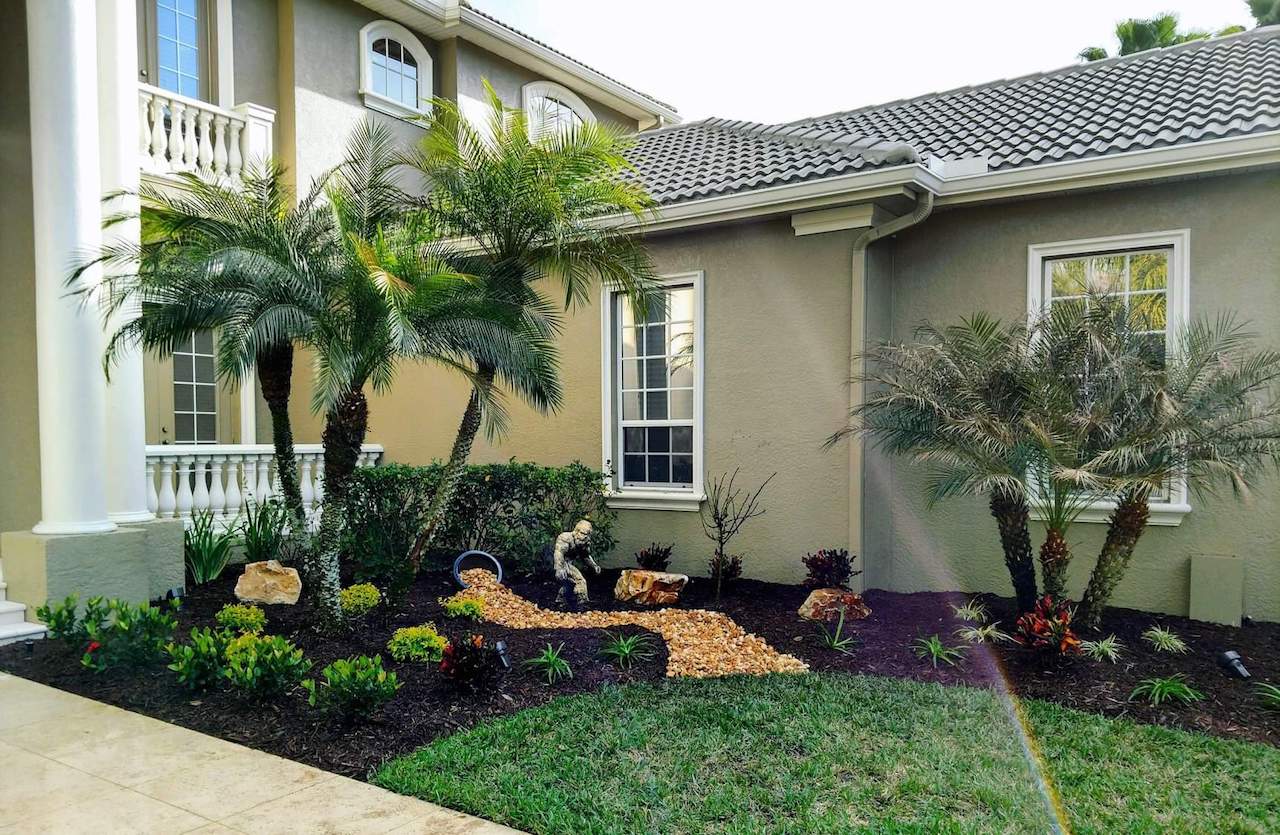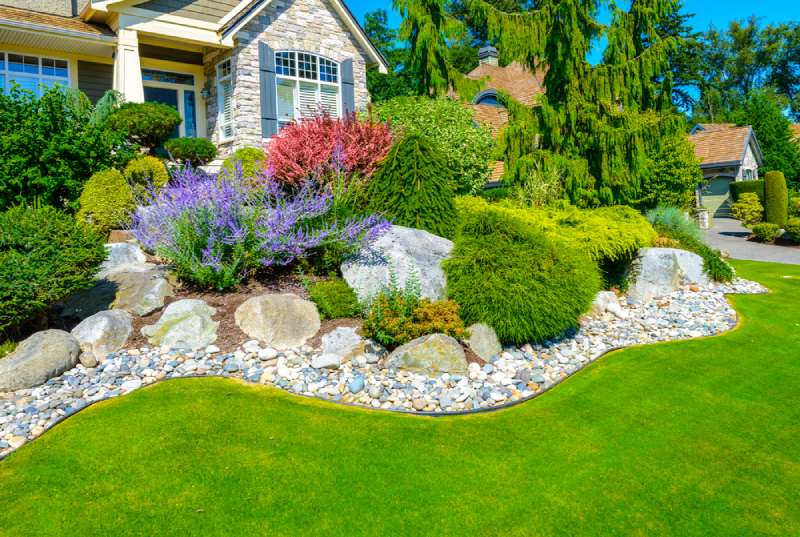A Comprehensive Guide to Creating and Implementing Effective Landscape Design Solutions
The art and science of landscaping expand beyond simple visual appeals; they entail a thoughtful combination of layout principles, ecological stewardship, and practical execution. What techniques can one utilize to ensure these landscapes not only grow but likewise grow in harmony with their environments?

Comprehending Landscape Design Concepts
One may question what foundational elements contribute to effective landscape layout. At its core, successful landscape layout rests on numerous crucial principles that lead the plan and selection of aspects within a space. These concepts include unity, rhythm, balance, and percentage, each offering to create an unified outdoor setting.
Unity refers to the cohesive partnership among different components, making sure that they collaborate cosmetically and functionally. Balance can be accomplished via unbalanced or symmetrical plans, allowing the landscape to feel steady and welcoming. Proportion includes recognizing the range of elements in connection to each various other and the surrounding environment, promoting aesthetic consistency and comfort.

Assessing Your Outdoor Area
Prior to implementing the principles of landscape style, a comprehensive analysis of your exterior space is important. This preliminary analysis helps define the scope of your landscaping job and makes certain that your layout aligns with the distinct attributes of your property. Begin by evaluating the dimensions of your area, taking exact dimensions to recognize the readily available location for various elements such as paths, yards, and patios.
Next, observe the existing functions of your landscape, including topography, soil quality, and drainage patterns. These factors significantly affect plant option and positioning. Furthermore, examine the sunlight exposure across various locations throughout the day, as this will affect the sorts of plants that thrive in your yard.
Take into consideration the microclimates produced by structures, trees, and other obstacles, as they can influence temperature level and wetness levels. Take note of any type of existing plants or hardscape elements that you desire to eliminate or retain. This comprehensive analysis prepares for a efficient and educated landscape design service, ensuring that your style is not only cosmetically pleasing but additionally practical and lasting for several years to find.
Sustainable Landscaping Strategies
These practices not only advertise ecological balance however additionally enhance the useful and visual value of a landscape. Executing effective irrigation systems, such as drip irrigation, minimizes water waste and guarantees that plants get sufficient moisture (Palm Desert Landscaping).

An additional reliable technique is the calculated positioning of shrubs and trees to give natural windbreaks and shade, hence decreasing energy costs (Palm Desert Landscaping). Rainfall yards can be incorporated right into the landscape layout to take care of stormwater drainage successfully, filtering toxins prior to they go into waterways
Choosing the Right Plants
Picking the right plants for your landscape is critical to attaining both aesthetic charm and environmental harmony. The procedure starts why not find out more with an understanding of your local climate, dirt problems, and the specific microenvironments within your landscape. Evaluating elements such as sunlight exposure, wetness levels, and existing plants will assist you select plants that flourish in your unique setting.
Consider incorporating native plants, as they are well-adapted to local conditions, call for much less upkeep, and assistance regional wildlife. Additionally, selecting a diverse selection of species can enhance biodiversity while reducing the threat of condition and bug break outs. It is necessary to examine the growth practices, blooming durations, and seasonal shades of prospective plants to produce a natural and vibrant landscape.
Furthermore, think of the intended use the room; as an example, if the area will certainly experience high foot website traffic, select resilient ground covers. By thoughtfully choosing plants that straighten with both your environmental demands and aesthetic goals, click now you can develop a sustainable landscape that not just improves your building however likewise contributes favorably to the surrounding ecological community.

Application and Upkeep Strategies
When the appropriate plants have been chosen for your landscape, the focus moves to efficient implementation and recurring upkeep strategies. Successful setup begins with appropriate website prep work, that includes soil testing to identify nutrient levels and pH, complied with by amending the soil as required. Carefully arrange plants according to their growth practices and light demands, making sure appropriate spacing to advertise healthy and balanced development.
Watering is a critical element of implementation. Establish a watering timetable that takes into consideration the specific needs of each plant species, adjusting for seasonal changes. Utilizing drip watering systems can boost water performance and minimize overflow.
Maintenance techniques should be executed to make certain the long life and vigor of your landscape. Routine tasks include weeding, mulching, and trimming to regulate development and avoid disease. Fertilization needs to be performed based upon soil tests, providing the necessary nutrients without over-fertilizing.
Monitoring for pests and conditions is important; early detection can protect against considerable damage. Seasonal adjustments to upkeep regimens, such as preparing and winterizing perennials for springtime growth, will ensure that your landscape continues to be visually attractive and healthy year-round.
Final Thought
To conclude, reliable landscaping options require a comprehensive understanding of design concepts, precise analysis of outdoor areas, and the application of lasting methods. The option of appropriate plant types plays a critical function in boosting aesthetic allure and eco-friendly resilience - Palm Desert Landscaping. Successful execution and ongoing maintenance additionally ensure the durability and vigor of landscapes. By incorporating these elements, landscapes can be transformed into attractive, functional atmospheres that promote biodiversity and add positively to neighborhood health.
One may question what fundamental components add to reliable landscape layout. At its core, effective landscape layout pivots on numerous vital concepts that lead the setup and option of view components within a room.Picking the right plants for your landscape is critical to attaining both aesthetic allure and eco-friendly consistency. It is necessary to examine the development behaviors, growing durations, and seasonal shades of prospective plants to produce a cohesive and dynamic landscape.
As soon as the ideal plants have actually been selected for your landscape, the focus shifts to reliable execution and recurring upkeep techniques.